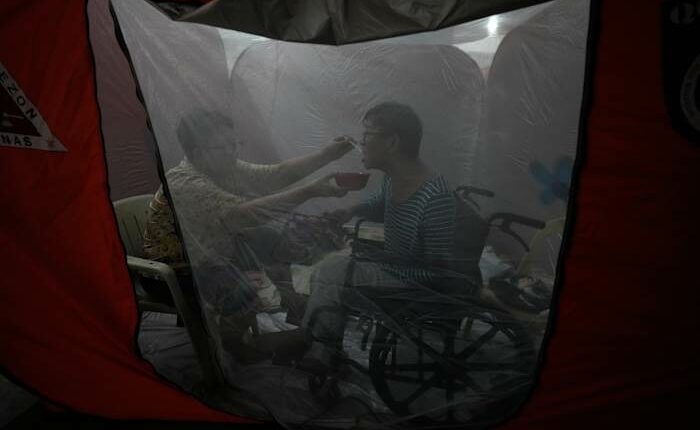Share this @internewscast.com

MANILA – In a brightly colored orange tent set up on a basketball court in Quezon City, 63-year-old Judy Bertuso gently feeds porridge to her husband, Apollo. At 65, Apollo is recovering from a stroke and sits in a wheelchair, silhouetted against the tent’s translucent walls. Judy, dressed in a simple T-shirt and shorts, carefully holds a bowl beneath the spoon, feeding him with patience and care.
Despite her evident fatigue, Judy’s movements are deliberate and tender, reflecting a lifetime of mutual care and devotion.
Just a day earlier, the couple evacuated their home by the creek, fearing another flood as Super Typhoon Fung-wong approached. Their house had already been submerged during heavy rains in October. Heeding urgent warnings on radio and television to seek higher ground, they decided not to take any chances.
This year, Fung-wong is the most formidable storm to threaten the Philippines, unleashing winds up to 185 kilometers per hour (115 mph) and gusts of 230 kph (143 mph) as it battered the northeastern coast on Sunday. The storm has forced over a million residents, including the Bertusos, to evacuate their homes.
Within the basketball court, a sea of bright tents shelters numerous families. The wind roars outside while inside, the soft hum of conversations mingles with the lively chatter and playfulness of children.
In the midst of this chaos and uncertainty, Judy’s hand trembles slightly as she feeds Apollo, symbolizing resilience. Though the storm may rage outside, their enduring care remains a constant within these makeshift walls.
Copyright 2025 The Associated Press. All rights reserved. This material may not be published, broadcast, rewritten or redistributed without permission.












